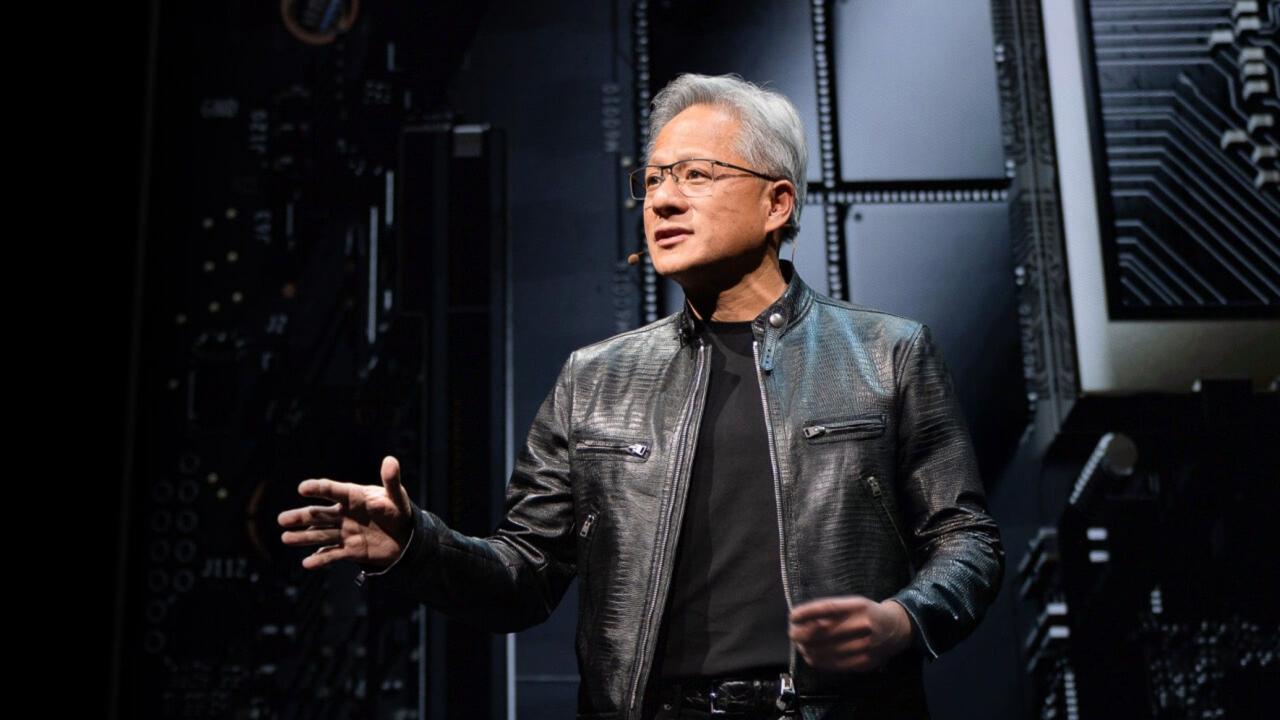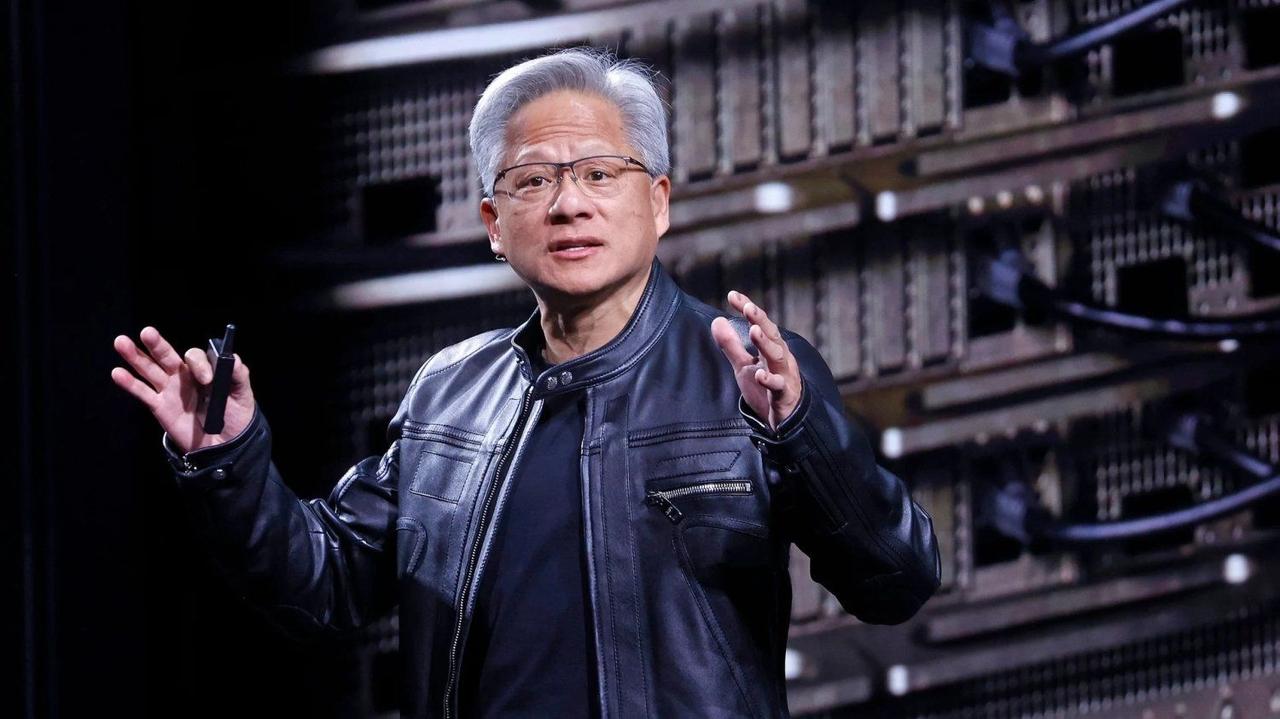AI Bubble Debate: Industry Leaders Clash Over Whether Current Boom Mirrors Dot-Com Era
3 Sources
3 Sources
[1]
Is the AI bubble about to burst, and what's driving analyst jitters?
AI stocks face bubble fears, but analysts say surging demand and infrastructure bottlenecks -- not speculation -- are the real issue. Concerns over a potential bursting of the artificial intelligence bubble have resurfaced with intensity, as US technology stocks recently faced their sharpest pullback since the Trump tariff-induced sell-off last April. Such movements have clear consequences when the sector is so pivotal for the markets. AI-related stocks have contributed to roughly 75% of the S&P 500's returns, 80% of earnings growth, and 90% of capital spending growth since the launch of OpenAI's ChatGPT in November 2022. The so-called "Magnificent Seven" -- Nvidia, Microsoft, Apple, Alphabet, Amazon, Meta Platforms, and Tesla -- now collectively command a market capitalisation greater than the Chinese economy. Nvidia alone is worth more than Japan, the world's third largest economy. But first: what defines a financial bubble? Can we really say that the current AI boom qualifies as a bubble? What does this phase of market euphoria have in common with the early 2000s -- and more importantly, what sets it apart? The investment community remains starkly divided over whether we are witnessing a speculative bubble in the AI industry. While some observers draw uncomfortable parallels with the dot-com crash of the early 2000s, others argue that the current AI revolution is underpinned by genuine, transformative economic fundamentals. UBS chief global equity strategist Andrew Garthwaite argues that the AI boom checks all the boxes for a classic bubble. He highlights several familiar patterns. Firstly, a pervasive "buy the dip" mentality, when investors flock to an asset when its price falls. Secondly, an investor belief that "this time must be different" due to revolutionary technology. Thirdly, increased retail participation, along with loose monetary conditions and a backdrop of stagnant earnings outside of the top ten US companies. Garthwaite notes that 21% of US households now own individual stocks, with that number rising to 33% including investment funds. Meanwhile, earnings growth is largely confined to the tech giants. "Today, outside the top ten companies in the US, 12-month forward earnings per share growth is close to zero," he said. However, others caution against simplistic comparisons with the dot-com era. Goldman Sachs equity analyst Peter Oppenheimer points out, that unlike speculative companies of the early 2000s, today's AI giants are delivering real profits. "While AI stock prices have appreciated strongly, this has been matched by sustained earnings growth, not mere speculation," said Oppenheimer. The current scenario of expensive equity valuations, Oppenheimer highlights, is less about speculative mania and more a reflection of broader macroeconomic conditions: low interest rates, high global savings, and a long economic cycle boosting risk assets. A key distinction between the current AI boom and the dot-com bubble of the late 1990s lies in valuations. Goldman Sachs indicates that the median 24-month forward price-to-earnings (P/E) ratio for today's 'Magnificent Seven' stands at 27 times earnings. This is nearly half the median valuation of the top tech stocks during the 2000 bubble, when companies like Cisco Systems, IBM, Oracle, Lucent Technologies, traded at eye-watering P/E multiples. Whether or not the AI boom will end in a bubble remains an open question that continues to divide the investment community. However, beyond speculation about future valuations, a more grounded and pressing issue is emerging. Until now, much of the conversation around AI has focused on demand -- on whether AI products and services meet real customer needs. But a new perspective is gaining traction: demand is not the problem. In fact, it is so strong that the industry's ability to supply the necessary computing power and physical capacity is struggling to keep up. According to Jordi Visser, head of AI Macro Nexus Research at 22V Research, the AI industry is facing a serious supply-side challenge -- particularly in terms of the energy and infrastructure required to support its growth. "This is not the dot-com bubble, because demand is massively outpacing supply," Visser said in a recent YouTube video. According to Visser, "the next AI investment phase will not be defined by who can spend the most, but by who can execute through constraint". He cited CoreWeave's recent earnings call as a watershed moment. Despite surging demand, the AI-cloud company's revenue backlog nearly doubled quarter-over-quarter to $55.6 billion (€47.98bn), CoreWeave slashed its 2025 capital expenditure guidance by up to 40%, citing delayed power infrastructure delivery. Oracle, too, is experiencing the same crunch. Despite a $455bn (€392.67bn) revenue backlog and major contracts with Meta, OpenAI, and xAI, the firm is "still waving off customers" due to capacity shortages, CEO Safra Catz confirmed. With CoreWeave and Oracle alone holding more than half a trillion dollars in revenue backlog, the market faces what Visser calls a "backlog paradox". AI firms have customers, capital and contracts, but they can't deploy infrastructure fast enough to monetise them. Craig Shapiro, founder and managing partner of the investment firm Collaborative Fund, also raised this issue in a recent post on social media X. "AI demand collided with physical limits. The next moat is control of land, power, water, and grid access. Firms with locked-in megawatts hold a stronger position than companies shipping GPUs. Cheap, firm power sets the pace of the entire buildout." Bottom line, the shift underway in the AI sector is structural. This is not merely a question of whether the AI bubble will burst, as history shows that even when bubbles do collapse, the underlying technologies often resurface stronger and more transformative. In the case of AI, the fear is not that demand will vanish -- it's that the physical world simply can't keep up.
[2]
NVIDIA CEO Jensen Huang explains why the AI boom is not like the dot-com bubble
TL;DR: The current AI boom differs from the 1990s dot-com bubble due to real-time, high-demand GPU usage and AI's advanced reasoning capabilities. NVIDIA CEO Jensen Huang highlights AI's unique computational needs and industry growth, though challenges like rising costs and power demands persist. During a recent 'The Minds of Modern AI' roundtable discussion and interview with the Financial Times, editor Madhumita Murgia brought up the question or idea that we're currently living in an 'AI bubble' similar to the dotcom bubble of the 1990s, and that sooner or later it's going to burst and the market will "correct" itself. For those who need a refresher or were too young to remember the 'dot-com bubble' of the late 1990s, this refers to a time when the stock market and investors saw the rise of the internet and the concept of the "World Wide Web" and decided to invest heavily in dot-com startups and companies. The bubble eventually burst, leaving only a few companies, such as Amazon, intact. The reason people are comparing the AI boom to the dot-com boom is that they see parallels in the rapid growth and the lack of signs that AI investments are leading to actual profits. In response to the comparison and question posed to NVIDIA CEO Jensen Huang, his initial brief answer is 'no'; the AI boom is not like the dot-com boom because back then, the majority of the fiber was "dark," meaning unused. Currently, with AI, "almost every GPU you can find is lit up and used." However, that's not all; AI is also significantly different from how software of the past was deployed - because AI requires access to vast amounts of computing power in real-time. "During the dot-com era, during the bubble, the vast majority of the fiber deployed was dark, meaning the industry deployed a lot more fiber than it needed. Today, almost every GPU you can find is lit up and used. I think it's important to take a take a step back and understand what AI is. For a lot of people, AI is ChatGPT and image generation, and that's all true. That's one of the applications of it. AI has advanced tremendously in the last several years. The ability to not just memorize and generalize, but to reason and effectively think and ground itself through research. It's able to produce answers and do things that are much more valuable now." Jensen Huang then goes on to explain how the need for computing and the concept of AI factories are fundamentally different from anything resembling the past. And with the rise of AI factories and things like the actual increasing demand for queries, the comparisons to the dot-com bubble are unfounded. "Software in the past was pre-compiled, and the amount of computation necessary for the software was not very high. In order for AI to be effective, it has to be contextually aware. It can only produce intelligence at the moment. You can't produce it in advance and retrieve it. AI intelligence has to be produced and generated in real time. And so as a result, we now have an industry where the computation necessary to produce something that's really valuable is in high demand and quite substantial. We have created an industry that requires factories." That said, the AI boom still faces issues related to the increased costs of producing, obtaining, and operating the cutting-edge technology capable of handling the most advanced AI systems, alongside the demand that AI is placing on power grids and power supplies. There are definite challenges ahead, and although comparisons to the dot-com era boom and bubble are not entirely accurate or like-for-like, there is still a sense that not all big AI players will come out on top.
[3]
"There Are No Dark Fibers in AI": NVIDIA's Jensen Huang Rejects Dot-Com Bubble Parallels, Arguing the AI Frenzy Is Built on Real Demand
NVIDIA's CEO, Jensen Huang, responds to the claims that AI is similar to the 'dot-com' bubble, saying that the compute demand out there is solid, unlike what the Internet era brought. The resemblance of AI and the dot-com bubble isn't derived from core technologies and their influence over the industry; instead, it comes from stock valuations and the 'crazy gains' people have seen in the past as a retailer. The inference is made from the growth NVIDIA has seen over the years, breaking stock valuation barriers within a period of months; however, Jensen has given his verdict, calling AI a 'bubble'. In the Financial Times' "The Minds of Modern AI" segment, NVIDIA's CEO believes that, unlike the dot-com era, the deployment of "dark fibre" has created real demand for computing power in AI. Question: Yeah. You know, tell us about, are you worried that we are getting to the point where people don't quite understand and we're all getting ahead of ourselves and there's going to be a reckoning that there's a bubble that's going to burst and then it will right itself? And if not, what is the kind of biggest misconception about demand coming from AI that is different to, say, the dot-com era or that people don't understand, you know, if that's not the case? Jensen Huang: During the dot-com era, during the bubble, the vast majority of the fiber deployed were dark, meaning the industry deployed a lot more fiber than it needed. Today, almost every GPU you could find is lit up and used. Well, if you are unaware of what the term 'dark fibre' means, it refers to the fact that during the mid- to late-1990s, the buildout of internet infrastructure was so massive that companies anticipated a drastic scaling up of the need for optical cables. Due to this, operators had dug in trenches and laid cables in a higher quantity than the actual demand back then, to make their operations 'future-proof', but their thesis turned out to be wrong, which is why the return on investment became practically zero. So, the concept of dark fibre means creating artificial demand. Now, NVIDIA's CEO claims that AI has evolved tremendously, while the mainstream consumer still sees the end representation of the technology as ChatGPT or image generation applications. Artificial intelligence has evolved to the point where it can "effectively think and ground itself through research", and this form of the technology is yet to be adopted amongst the masses. Jensen argues that not only are the computing needs of companies increasing exponentially, but the number of queries generated is also rising, indicating that the demand isn't artificial at all. We won't comment on whether NVIDIA's CEO is right here when it comes to computing demand and the parallels between the dot-com and AI frenzy, but what we do know is that artificial intelligence has massive room for growth, which requires computing capabilities, whether they come from NVIDIA, AMD, or Intel. However, there are constraints to consider with such a massive buildout, one of which is the energy concerns associated with it. Another pivotal consideration is whether CSPs like Microsoft have the capability to integrate AI chips produced by NVIDIA or others.
Share
Share
Copy Link
NVIDIA CEO Jensen Huang and financial analysts debate whether the current AI boom represents a speculative bubble like the dot-com era, with disagreement over demand sustainability and infrastructure constraints.
Market Concerns Resurface Amid AI Stock Volatility
Concerns over a potential artificial intelligence bubble have intensified following the sharpest pullback in US technology stocks since April's Trump tariff-induced sell-off
1
. The stakes are particularly high given AI's outsized market influence, with AI-related stocks contributing roughly 75% of the S&P 500's returns, 80% of earnings growth, and 90% of capital spending growth since ChatGPT's launch in November 20221
.The so-called "Magnificent Seven" technology giants—NVIDIA, Microsoft, Apple, Alphabet, Amazon, Meta Platforms, and Tesla—now command a collective market capitalization exceeding China's entire economy, with NVIDIA alone worth more than Japan, the world's third-largest economy
1
.Divided Expert Opinion on Bubble Characteristics
The investment community remains sharply divided over whether current market conditions constitute a speculative bubble. UBS chief global equity strategist Andrew Garthwaite argues the AI boom exhibits classic bubble characteristics, including pervasive "buy the dip" mentality, widespread belief that "this time is different," increased retail participation, and stagnant earnings outside the top ten US companies
1
.Garthwaite notes that 21% of US households now own individual stocks, rising to 33% including investment funds, while earnings growth remains concentrated among tech giants. "Today, outside the top ten companies in the US, 12-month forward earnings per share growth is close to zero," he observed
1
.However, Goldman Sachs equity analyst Peter Oppenheimer cautions against simplistic dot-com comparisons, emphasizing that today's AI giants deliver real profits rather than mere speculation. The current expensive equity valuations reflect broader macroeconomic conditions including low interest rates, high global savings, and extended economic cycles boosting risk assets
1
.NVIDIA CEO Rejects Bubble Comparisons
NVIDIA CEO Jensen Huang directly challenges bubble comparisons in recent interviews, arguing fundamental differences distinguish the current AI boom from the dot-com era
2
.
Source: Wccftech
"During the dot-com era, during the bubble, the vast majority of the fiber deployed was dark, meaning the industry deployed a lot more fiber than it needed. Today, almost every GPU you can find is lit up and used," Huang explained
3
.Huang emphasizes AI's unique computational requirements, noting that unlike pre-compiled software, AI must generate intelligence in real-time with contextual awareness. "AI intelligence has to be produced and generated in real time. And so as a result, we now have an industry where the computation necessary to produce something that's really valuable is in high demand and quite substantial," he stated
2
.
Source: TweakTown
Related Stories
Supply-Side Constraints Emerge as Primary Challenge
Beyond speculation debates, industry analysts identify supply-side bottlenecks as the more pressing concern. Jordi Visser from 22V Research argues that massive demand is outpacing the industry's ability to supply necessary computing power and infrastructure. "This is not the dot-com bubble, because demand is massively outpacing supply," Visser noted, suggesting the next investment phase will be defined by execution through constraints rather than spending capacity
1
.CoreWeave's recent earnings exemplify these challenges, with the AI-cloud company's revenue backlog nearly doubling to $55.6 billion while simultaneously slashing 2025 capital expenditure guidance by up to 40% due to delayed power infrastructure delivery
1
. Similarly, Oracle maintains a $455 billion revenue backlog with major contracts from Meta, OpenAI, and xAI, yet continues "waving off customers" due to capacity shortages1
.References
Summarized by
Navi
Related Stories
Financial Institutions Sound Alarm on Potential AI Bubble Burst
08 Oct 2025•Business and Economy

AI Investment Bubble Concerns Intensify as Industry Leaders Warn of 'Irrationality' Despite Nvidia's Strong Earnings
18 Nov 2025•Business and Economy

OpenAI's Trillion-Dollar Gamble: Massive Investments in AI Computing Power Raise Bubble Concerns
03 Oct 2025•Business and Economy

Recent Highlights
1
AI Chatbots Sway Voters More Effectively Than Traditional Political Ads, New Studies Reveal
Science and Research

2
OpenAI declares code red as Google's Gemini 3 gains 200 million users in three months
Technology

3
Trump approves Nvidia H200 chip exports to China with 25% revenue cut, defying Senate concerns
Policy and Regulation




